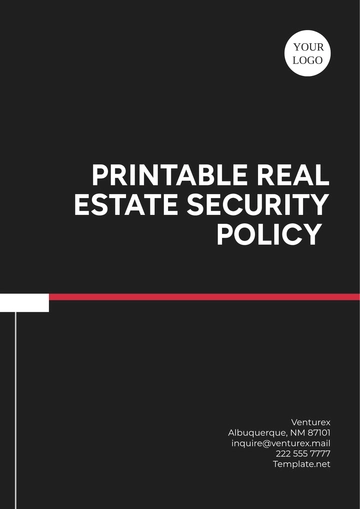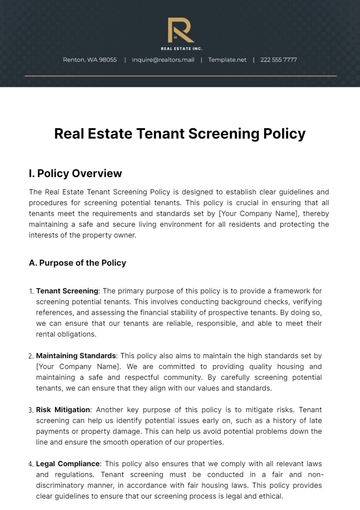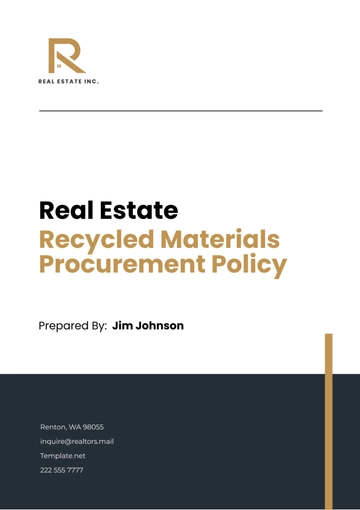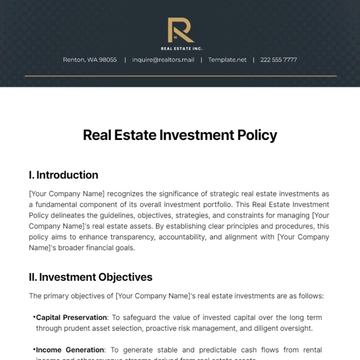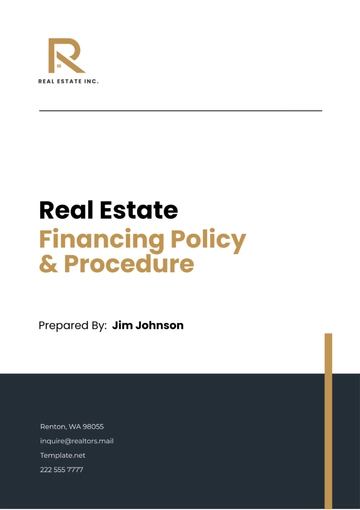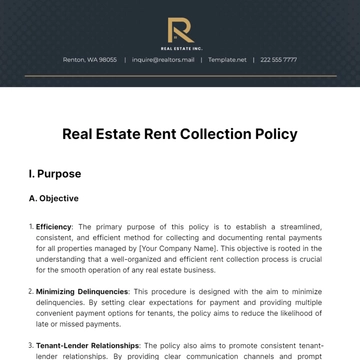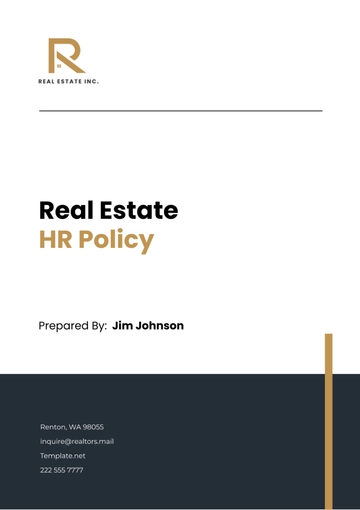Free Real Estate Energy Efficiency Policy
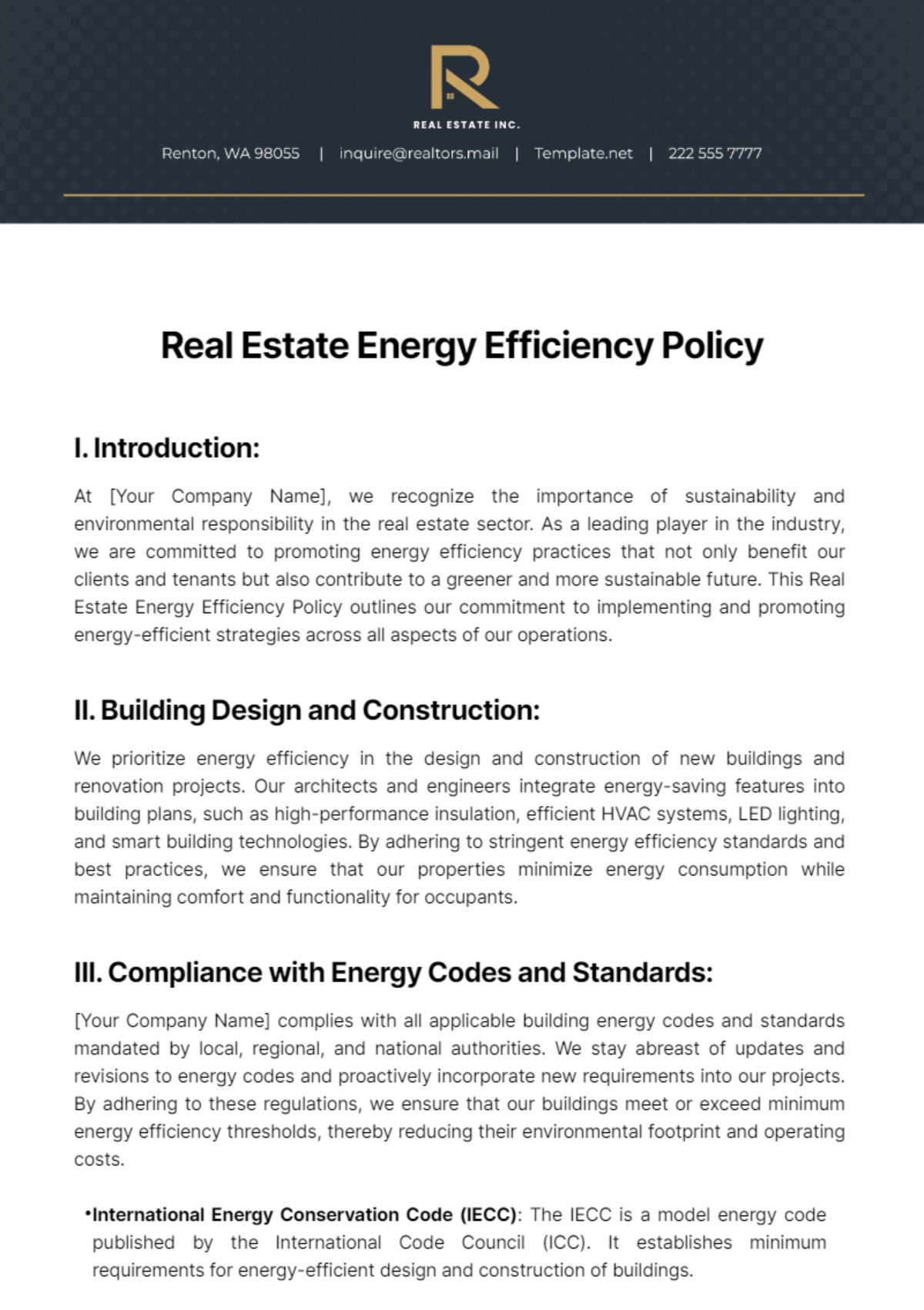
I. Introduction:
At [Your Company Name], we recognize the importance of sustainability and environmental responsibility in the real estate sector. As a leading player in the industry, we are committed to promoting energy efficiency practices that not only benefit our clients and tenants but also contribute to a greener and more sustainable future. This Real Estate Energy Efficiency Policy outlines our commitment to implementing and promoting energy-efficient strategies across all aspects of our operations.
II. Building Design and Construction:
We prioritize energy efficiency in the design and construction of new buildings and renovation projects. Our architects and engineers integrate energy-saving features into building plans, such as high-performance insulation, efficient HVAC systems, LED lighting, and smart building technologies. By adhering to stringent energy efficiency standards and best practices, we ensure that our properties minimize energy consumption while maintaining comfort and functionality for occupants.
III. Compliance with Energy Codes and Standards:
[Your Company Name] complies with all applicable building energy codes and standards mandated by local, regional, and national authorities. We stay abreast of updates and revisions to energy codes and proactively incorporate new requirements into our projects. By adhering to these regulations, we ensure that our buildings meet or exceed minimum energy efficiency thresholds, thereby reducing their environmental footprint and operating costs.
International Energy Conservation Code (IECC): The IECC is a model energy code published by the International Code Council (ICC). It establishes minimum requirements for energy-efficient design and construction of buildings.
ASHRAE Standard 90.1: Developed by the American Society of Heating, Refrigerating, and Air-Conditioning Engineers (ASHRAE), Standard 90.1 provides minimum requirements for the energy-efficient design of buildings and systems.
Energy Star: Energy Star is a voluntary program by the U.S. Environmental Protection Agency (EPA) that provides energy efficiency guidelines and certification for buildings, appliances, and equipment.
LEED (Leadership in Energy and Environmental Design): Developed by the U.S. Green Building Council (USGBC), LEED is a green building certification program that includes energy efficiency criteria among its sustainability standards.
BREEAM (Building Research Establishment Environmental Assessment Method): BREEAM is a sustainability assessment method and certification for buildings, with energy efficiency as one of its key performance criteria, commonly used in the UK and Europe.
IV. Energy Performance Monitoring and Reporting:
We employ advanced energy monitoring systems to track and analyze the energy performance of our properties continuously. Through real-time data monitoring and analysis, we identify opportunities for energy savings and operational improvements. Regular energy performance reports are shared with property owners, tenants, and stakeholders to promote transparency and accountability in our energy management practices.
V. Energy Audits and Retrofits:
[Your Company Name] conducts comprehensive energy audits of existing buildings to assess their energy performance and identify areas for improvement. Based on audit findings, we develop customized retrofit strategies to enhance energy efficiency and reduce utility expenses. These retrofit measures may include upgrading HVAC systems, installing energy-efficient lighting, enhancing building insulation, and implementing smart energy management technologies.
VI. Tenant Engagement and Education:
We actively engage with tenants to promote energy conservation and sustainability practices. Through tenant education programs, workshops, and outreach initiatives, we empower occupants to adopt energy-efficient behaviors and reduce their energy consumption. We provide practical tips, resources, and incentives to encourage tenants to participate in energy-saving initiatives and contribute to a more sustainable built environment.
VII. Renewable Energy Integration:
[Your Company Name] explores opportunities to integrate renewable energy sources into our real estate portfolio. We evaluate the feasibility of solar, wind, and other renewable energy technologies to offset electricity consumption and reduce our reliance on fossil fuels. By investing in clean energy solutions, we not only reduce carbon emissions but also enhance the resilience and sustainability of our properties.
VIII. Collaboration with Industry Partners:
We collaborate with industry partners, suppliers, and stakeholders to advance energy efficiency initiatives within the real estate sector. Through partnerships with energy service companies, technology providers, and sustainability organizations, we leverage expertise, resources, and innovative solutions to accelerate the adoption of energy-efficient practices. By working together, we can drive positive change and create more sustainable built environments.
IX. Continuous Improvement and Innovation:
[Your Company Name] is committed to continuous improvement and innovation in energy efficiency. We invest in research and development to explore emerging technologies, materials, and design strategies that further enhance the energy performance of our buildings. By embracing innovation and staying ahead of industry trends, we remain at the forefront of sustainable real estate development and deliver value to our clients and communities.
X. Conclusion:
At [Your Company Name], we view energy efficiency as a cornerstone of our sustainability efforts and corporate responsibility. Through proactive measures, collaboration, and innovation, we strive to create real estate properties that are energy-efficient, environmentally friendly, and economically viable. By adhering to this Real Estate Energy Efficiency Policy, we demonstrate our commitment to building a more sustainable future for generations to come.
- 100% Customizable, free editor
- Access 1 Million+ Templates, photo’s & graphics
- Download or share as a template
- Click and replace photos, graphics, text, backgrounds
- Resize, crop, AI write & more
- Access advanced editor
Ensure energy efficiency in real estate operations with Template.net's Real Estate Energy Efficiency Policy Template. Easily editable in our AI Editor Tool, this customizable template provides a structured framework for outlining energy-saving goals, strategies, and initiatives. Streamline communication, promote sustainability efforts, and reduce carbon footprint effortlessly with this template from Template.net!
You may also like
- HR Policy
- Restaurant Policy
- Company Policy
- Accounting Policies and Procedures
- Website Policy
- Privacy Policy
- Safety Policy
- School Policy
- IT and Software Policy
- Law Firm Policy
- Construction Policy
- Interior Design Policy
- Travel Agency Policy
- Education Academic Policy
- Security Policy
- Real Estate Policy
- Expense Policy
- Software Policy
